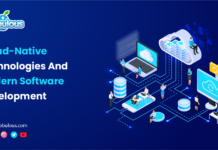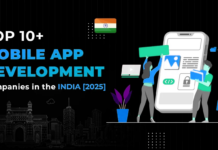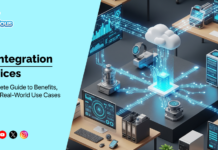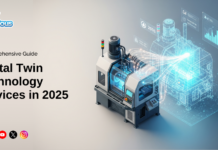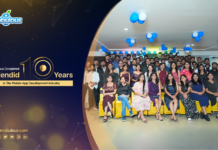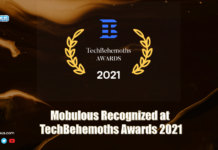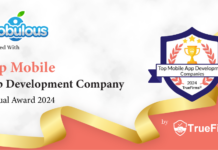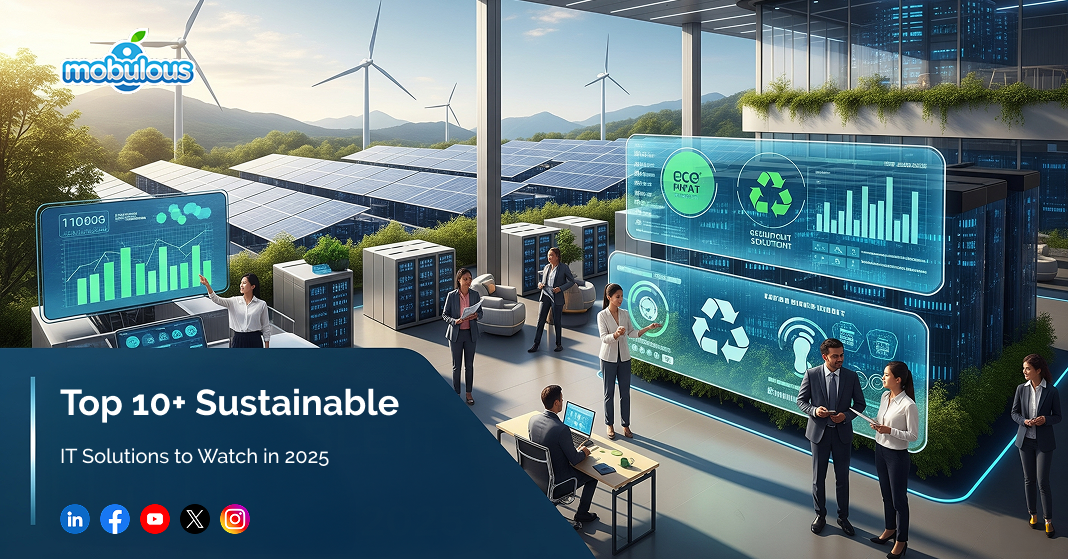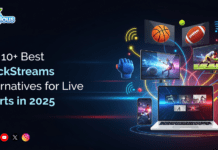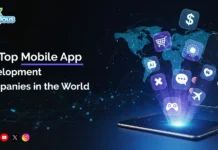What is a Sustainable IT Solution?
Sustainable IT solutions, or green IT, focus on cutting the environmental impact of technology. This includes the entire life cycle, from design and manufacturing to usage and disposal. The goal is to lower energy use, reduce waste, and encourage reuse and recycling. It’s not just about using less, but it’s about using smarter.
For businesses looking to reduce their environmental impact, partnering with a reliable cloud migration & hosting company is a smart step toward adopting sustainable IT solutions.
List of Top 11 Sustainable IT Solutions in 2025
- Cloud Computing & Virtualization
- Telecommuting & Virtual Offices
- Energy-Efficient Hardware
- Renewable Energy Integration
- Sustainable Software Development
- Responsible E-Waste Management
- Decarbonization Software
- Sustainable IT Consulting
- Climate Accounting Platforms
- Data Center Optimization
- Sustainable Supply Chains
Read more: Green Cloud Computing: How It’s Shaping Sustainable Business Strategies
Top 11 Sustainable IT Solutions in 2025: Why They Matter & Examples
1. Cloud Computing & Virtualization
Cloud computing and virtualization move workloads from local devices to remote servers. This reduces the need for physical machines. It cuts down on energy use. These are key sustainable IT solutions. They allow flexible scaling while minimizing waste, costs, and emissions across a company’s digital infrastructure.
Why it Matters
- Reduced Energy Use: Cloud providers run mega data centers that are optimized for energy efficiency. This saves more power than scattered local servers.
- Lower Hardware Demand: Businesses don’t need to buy tons of machines. That means less production, less shipping, and fewer materials wasted.
- Flexible Infrastructure: Resources scale up or down based on actual demand. So there’s less energy used when the activity is low.
Example: Google Cloud runs on renewable energy and uses AI to fine-tune power usage across its servers.
2. Telecommuting & Virtual Offices
Telecommuting lets employees work from home using digital tools. Virtual offices reduce the need for physical spaces. This sustainable IT solution helps lower emissions from commuting. They also reduce electricity use in buildings. This approach supports both environmental goals and a flexible, remote-first work culture.
Why it Matters
- Fewer Emissions: No commute means no fuel. Remote work slashes transport-related carbon output.
- Reduced Office Space: Fewer people in offices means lower electricity bills and reduced heating or cooling costs.
- Better Work-Life Balance: Happy employees are more likely to stay. This cuts costs related to turnover and training.
Example: Zoom has allowed millions to replace in-person meetings with video calls, cutting down travel miles.
3. Energy-Efficient Hardware
Energy-efficient hardware is built to use less power. It performs the same tasks as older equipment but with lower energy demand. These sustainable IT solutions also generate less heat. That means less cooling is needed. Over time, this reduces electricity costs and extends the lifespan of devices.
Why it Matters
- Power Savings: Efficient components need less electricity. That lowers utility costs across the board.
- Longevity Boost: Less power means less heat. Less heat means your devices last longer.
- Lower Cooling Needs: Cooler hardware puts less stress on air conditioning systems, especially in data centers.
Example: Apple’s M-series chips deliver top-tier performance but use far less energy than older CPUs.
4. Renewable Energy Integration
Renewable energy integration means using solar, wind, or hydropower to run IT systems. This sustainable IT solution replaces fossil fuels. They lower carbon emissions from data centers and offices. Clean power helps make tech infrastructure greener. It also prepares businesses for a low-carbon future.
Why it Matters
- Green Power Source: Clean energy replaces coal and gas. That’s a major cut in emissions.
- Lower Carbon Footprint: Running IT on renewables dramatically shrinks overall environmental impact.
- Future-Proofing Systems: Renewable power prepares your business for a lower-emissions future.
Example: Microsoft’s data centers are shifting to wind and solar and aim for 100% renewable energy by 2025.
5. Sustainable Software Development
Sustainable software is designed to run with fewer system resources. It uses less processing power and memory. These sustainable IT solutions reduce energy consumption. Lighter code puts less strain on devices. This helps extend their usable life and improves overall digital efficiency.
Why it Matters
- Efficient Code Execution: Clean code runs faster. It uses fewer system resources and draws less power.
- Lower Resource Demand: Software built to be lightweight keeps older devices running longer.
- Longer Device Life: When software doesn’t bog down systems, you don’t need to upgrade as often.
Example: Progressive Web Apps (PWAs) work inside web browsers and reduce the need for heavy apps or frequent updates.
6. Responsible E-Waste Management
E-waste management is about handling old electronics properly. Devices are recycled, reused, or disposed of safely. This sustainable IT solution prevents toxic waste from reaching landfills. They also recover valuable materials. This keeps equipment in circulation and supports a circular economy.
Why it Matters
- Reuse & Recycling: Valuable metals and components get salvaged. Old machines find second lives.
- Toxic Waste Reduction: Avoids dangerous materials like lead and mercury from leaking into the environment.
- Circular Economy Support: Keeps hardware in circulation longer. Reduces the need for new materials.
Example: Dell runs global programs to collect, recycle, or refurbish outdated devices.
7. Decarbonization Software
Decarbonization software tracks and helps reduce carbon emissions. It collects real-time data from across IT systems. These sustainable IT solutions show where energy is wasted. Companies can then fix those issues. This improves reporting and supports long-term climate goals.
Why it Matters
- Real-Time Monitoring: See your carbon data as it happens. No more relying on vague estimates.
- Carbon Footprint Insight: Identify the areas of IT that generate the most emissions.
- Better Reporting Tools: These tools simplify how companies meet sustainability reporting standards.
Example: Salesforce Net Zero Cloud lets organizations measure, manage, and reduce their emissions across operations.
8. Sustainable IT Consulting
Sustainable IT consultants help businesses go green. They review current operations and suggest eco-friendly strategies. This sustainable IT solution focuses on energy use, hardware, and policies. The goal is to cut emissions, reduce costs, and make IT more efficient.
Why it Matters
- Tailored Green Strategy: Consultants study your operations and build a custom sustainability plan.
- Measurable Impact Planning: You’ll know what steps to take and how to track real results.
- Policy Compliance Help: They help you meet national and international green tech standards.
Example: Accenture helps businesses restructure IT systems to reduce waste and improve energy performance.
9. Climate Accounting Platforms
Climate accounting platforms measure a company’s carbon footprint. They track emissions from devices, data centers, and supply chains. These sustainable IT solutions organize the data for reports and audits. They help businesses make smarter decisions and stay compliant with climate regulations.
Why it Matters
- Transparent Metrics: Real numbers. No greenwashing. Just honest tracking of IT-related emissions.
- Simplified Audits: Makes third-party verification and internal reporting faster and easier.
- Data-Driven Goals: Clear insights help teams set better, smarter environmental targets.
Example: Persefoni offers full-scale climate disclosure tools trusted by enterprises and investors.
10. Data Center Optimization
Data center optimization improves how servers use power and space. It involves better cooling, load balancing, and smarter hardware. This sustainable IT solution lowers electricity use. They also reduce equipment waste. The result is a leaner, more efficient infrastructure.
Why it Matters
- Energy Load Balancing: Move heavy tasks to off-peak hours. This flattens power demand.
- Efficient Cooling Design: Switch to liquid cooling. Improve airflow. Less A/C needed.
- Server Consolidation: Use fewer machines by making them work harder and smarter.
Example: Meta uses AI to control how much energy each part of its data centers uses. The results save millions of kilowatt-hours.
11. Sustainable Supply Chains
Sustainable supply chains make sure IT products are made and delivered with less environmental harm. These sustainable IT solutions look at materials, shipping, and suppliers. They focus on ethical sourcing and carbon reduction. The goal is to build greener tech from start to finish.
Why it Matters
- Greener Vendors: Work with partners who meet environmental standards.
- Ethical Sourcing: Use suppliers that don’t exploit labor or pollute ecosystems.
- Transportation Efficiency: Fewer shipments. Smarter routing. Lower delivery emissions.
Example: HP monitors its entire supply chain and reports openly on energy use and sourcing ethics.
Challenges in Sustainable IT Solutions
- Measurement Inaccuracy: Many tools still struggle to track emissions and waste precisely. That makes goal-setting tricky.
- Supply Chain Complexity: Global networks make it hard to confirm each partner’s sustainability claims.
- Tech Lifecycle Waste: Devices get replaced too fast. This adds to growing e-waste piles worldwide.
- Energy-Heavy Systems: Cloud and streaming are efficient, but still consume massive energy.
- Limited Global Policy: Some countries support green tech. Others don’t. That slows global progress.
Read more: IoT Integration Services: Benefits, Types & Use Cases
Conclusion
Sustainable IT solutions aren’t just buzzwords, but they’re the future of tech. Every data center, device, and line of code matters. The way we use and dispose of technology is changing fast. If your business isn’t already moving toward sustainability, you’re falling behind. Whether it’s cloud computing, renewable energy, or better e-waste practices, these small shifts today add up. This is how we build a cleaner digital world.
Facing complex sustainability challenges? Partner with a trusted business consulting company to develop effective, tailored green IT strategies.
FAQs – Top Sustainable IT Solutions
Q1. What is a sustainable IT solution?
It’s a way to cut energy use and waste in tech. For example, switching to energy-efficient hardware means less power is used. Less power means less heat, which means you don’t need as much cooling. It’s smart, clean, and better for the planet.
Q2. What is sustainability in the IT industry?
Sustainability in IT means making smarter choices, which include using energy wisely, choosing recyclable parts, and cutting digital waste. It’s about helping the planet while still meeting business goals.
Q3. What is the meaning of sustainable IT?
Sustainable IT, or green IT, means designing, using, and recycling tech in ways that don’t harm the environment. It covers everything from laptops and servers to code and cloud platforms.
Q4. Why is IT sustainable use?
Because it protects our resources, lowers pollution, and ensures future generations can access the same materials we use today. Sustainable IT is how we keep our digital future clean.



